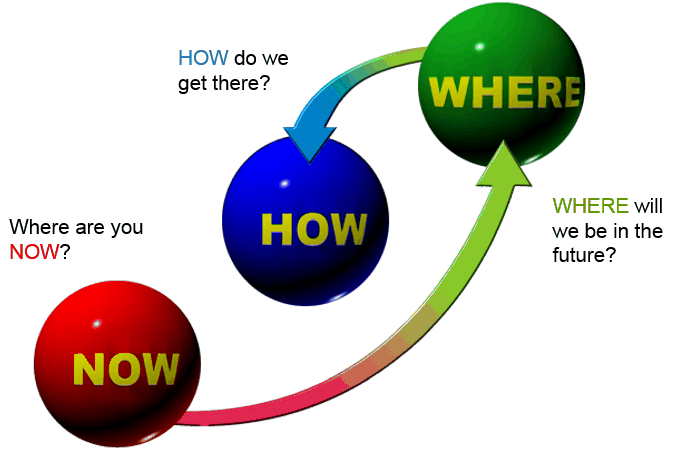Planning for anything in your business can be a daunting process but it needn’t be. The NOW - WHERE - HOW process follows three simple steps that can guide you towards putting together a strategy to do almost anything from a simple action plan to a comprehensive business plan.

Step 1: Start by asking where you are NOW. If you’re developing a business plan you can think about those aspects of the business that are important to you. For example you could consider any one or all of the following and develop some bullet points around each:
· Your current revenue, profitability and cashflow
· Your current customers and the services you provide
· How you win work or market your business
· Who your current competitors are
· Your people, their skills and attitudes
· Your assets including alliances or partnerships with other businesses
· Your core processes – production, sales, health and safety etc
Starting your planning by thinking about Now is important because it enables you stick a peg in the ground against which future progress and achievements can be measured.
Step 2: Consider WHERE you would like your business to be in the future. You can choose any time frame you wish, e.g. six months, one year, two years etc. Jot down your answers to create a “vision” of what your business could look like in the future. This step is all about performance and outcomes. By having a good understanding of where you are heading you will be able to filter what is important and what is not so important when you get to step 3.
Step 3: Having established where you would like to be, you can consider HOW to get there. This is all about action and identifying the drivers of performance and it is easier to do because you now know where you are going.
After completing the Now - Where - How analysis you will probably have identified a whole range of strategies you can work on. It is a good idea to prioritise your actions and address only three or four at a time. You can also summarise them into a one page plan which is an easy way to keep things on track by clarifying outcomes, responsibilities and time frames.